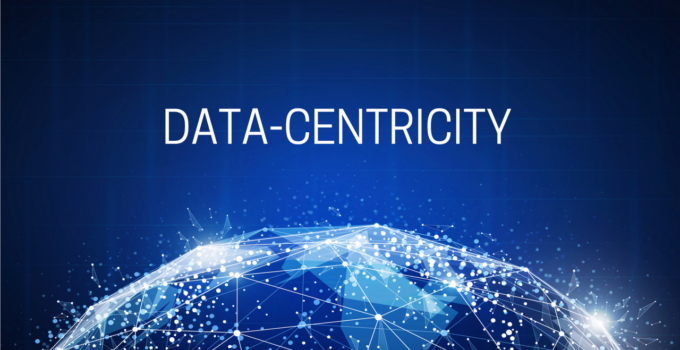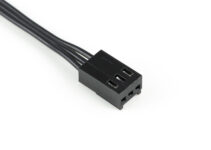In today’s digital world, data is the lifeblood of every business. It is essential to safeguard it from falling into the wrong hands. Organizations and workers enjoy new freedom and flexibility with technological advancements like digitalization, cloud computing, and Software as a Service (SaaS).
However, these advancements also extend data beyond traditional security perimeters. However, when company and customer data is beyond the control of on-site security measures, there is an increased risk of data theft, manipulation, and loss. Cybercriminals aim to steal or destroy valuable data, which makes it crucial to protect data from unauthorized access.
Organizations should not upset employees by imposing stricter security measures, such as prohibiting trends like BYOD or flexible working schemes. Instead, they need to find ways to maintain flexibility while heightening security. The challenge is to balance the benefits of new technology and data protection. This is where data-centric cybersecurity strategies come into play.
What Is a Data-Centric Security Strategy?
Implementing data-centric security is essential for organizations to protect sensitive data. Traditional security measures primarily concentrate on safeguarding servers and infrastructure. However, a data-centric security model prioritizes the lifecycle of data that flows through an organization.
This approach ensures that data is collected, transmitted, stored, replicated, archived, and accessed securely, and only authorized individuals can access it. Data-centric security processes and policies focus on safeguarding sensitive data from unauthorized access or misuse.
Why Is Data-Centric Security a Necessity?

Source: securitybrief.com.au
Data breaches are a serious threat to businesses, regardless of their size. As companies collect and process enormous amounts of data, it becomes essential to safeguard sensitive customer information, financial records, and intellectual property. In today’s world, this data is stored and accessed through various endpoints.
A data breach can be a catastrophic event for a company’s reputation. Even a single data breach can lead to significant financial losses, legal liabilities, and a loss of customer trust. According to the annual IBM Cost of a Data Breach report, the global average cost per data breach has increased to $4.45 million in 2024, marking a cumulative increase of 15.3% since 2020.
Organizations need to adopt a data-centric security strategy to tackle the risk of cyber-attacks. Such a strategy involves putting in place security controls to protect against cyber threats and backup solutions to ensure that data can be restored quickly in the event of a cyber attack.
Establishing a Data-Centric Security Strategy
A data-centric approach is a comprehensive data protection strategy that ensures information safety at every stage as it moves through an organization. This approach addresses security vulnerabilities and closes data security gaps. It also safeguards data exchanges and company communications and mitigates cybersecurity threats to organizational data.
The following tools can help organizations implement a data-centric approach to protect sensitive information.
Data Classification

Source: polymerhq.io
When protecting your organization’s data, the first step is to classify it based on sensitivity. Not all data is equally valuable or critical, so you can allocate resources and security measures more effectively by categorizing it into different sensitivity levels.
This can be done using tools that tag data with different attributes, such as “restricted” or “public,” which help group and sort data. Once data is classified, organizations can assign different risk levels to it and impose access protocols and security measures to protect it as it moves through employee and vendor hands. For example, financial records, customer personally identifiable information (PII), and intellectual property might be considered highly sensitive, while marketing materials or public website content may be less so.
Data Encryption
Implementing robust encryption techniques to safeguard data at rest and in transit is crucial. Encryption ensures that even if an attacker gains access to the data, it cannot be read without the decryption keys. This is especially important for sensitive information stored on devices or transmitted over networks.
Additionally, businesses should have a firm cryptographic key management policy to complement data encryption. The entire encryption infrastructure can collapse if encryption keys are compromised.
Data Loss Prevention (DLP)

Source: polymerhq.io
Once an organization has classified its data, it becomes essential to implement additional security measures to ensure its safety. Data loss prevention (DLP) software creates a protective shield around the data, protecting it from external phishing, ransomware attacks, and unauthorized internal access. Investing in DLP solutions that monitor data flow and prevent unauthorized transfers or leaks can be highly beneficial. These systems can help identify and stop any attempts to transmit sensitive information outside the organization.
Access Control
It is essential to maintain strict access controls that restrict who can access sensitive data. Role-based access control (RBAC) techniques should be employed to ensure that only authorized personnel are permitted to view or alter sensitive information. In addition to implementing a least privilege approach to access security, businesses must utilize multi-factor authentication (MFA) whenever possible to provide an extra layer of protection.
Data Masking and Redaction
To protect sensitive data during necessary data sharing, businesses can opt for techniques such as data masking and data redaction. Data masking involves displaying only a portion of sensitive data, while data redaction removes sensitive information. For instance, financial and banking institutions commonly use data masking to ensure credit card data remains safeguarded from unauthorized disclosure and complies with PCI DSS requirements.
Many security models focus on building a strong perimeter around infrastructure, making it difficult for employees to access data and perform their duties due to intricate and arduous protocols. On the other hand, the data-centric model prioritizes data flow, which can lead to a better employee experience.
Organizations can reduce the risk of data breaches by adopting a data-centric cybersecurity approach and better protect their most valuable assets. Data breaches can have severe financial, legal, and reputational consequences, so it is crucial to continuously assess and update your cybersecurity measures to adapt to evolving threats and protect sensitive information.







